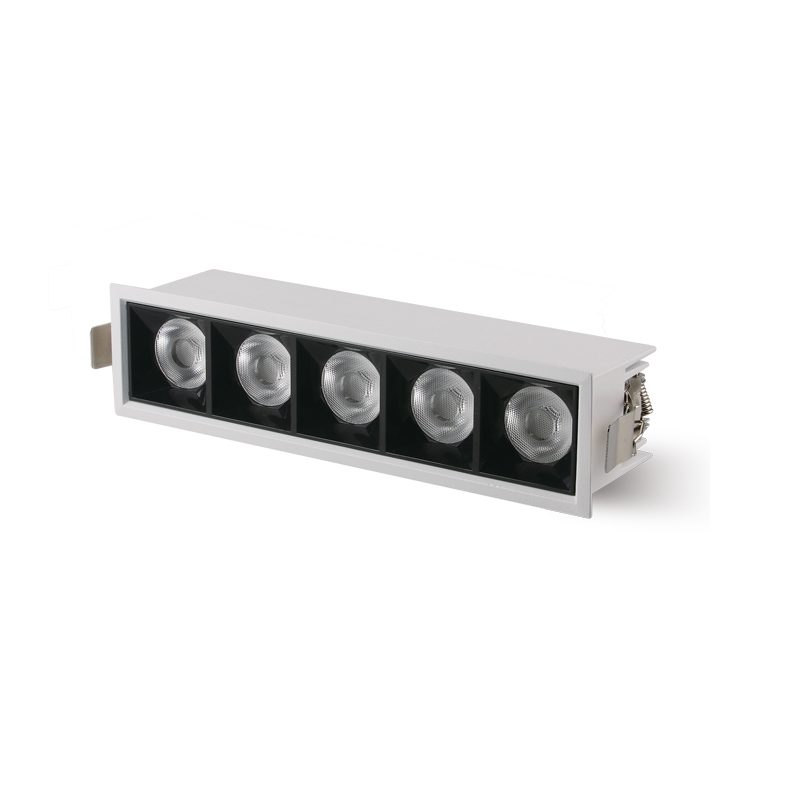News
Five types of LED light dimming: DALI dimming, Triac dimming, PWM dimming, 0/1-10V dimming
Five types of LED light dimming: DALI dimming, Triac dimming, PWM dimming, 0/1-10V dimming, and the difference between DMX dimming
The light-emitting principle of LED is different from that of traditional lighting. LED light sources with the same power use different chips and different current and voltage parameters, so their internal wiring structure and circuit distribution are also different, leading to different requirements for dimming drive from light sources of various manufacturers. As a result, the mismatch between the control system and light source appliances has become a common problem in the industry. At the same time, the diversification of LED also poses a higher challenge to the control system. If the control system and lighting equipment are not matched, it may cause the lights to go out or flicker, and may cause damage to the LED driver circuit and light source.
There are five common dimming methods on the market:
DALI Dimming
Triac dimming
PWM dimming
0/1-10V dimming
DMX dimming.
1: DALI Dimming
The DALI standard has defined a DALI network that includes a maximum of 64 units (with independent addresses), 16 groups, and 16 scenarios. The different lighting units on the DALI bus can be flexibly grouped to achieve different scene control and management. In practical applications, a typical DALI system application can control 40-50 lights, which can be divided into 16 groups, and can simultaneously process some controls/scenarios in parallel.
The advantage of DALI lies in its specialized protocol regulations, which enhance product interoperability between different brands, and each DALI device has a separate address code, truly achieving single light controllability. Bidirectional communication facilitates timely inquiry and understanding of device status and information.
2: Triac dimming
Triac dimming has been applied to incandescent and energy-saving lamps for a long time, and is currently the most widely used dimming method for LED dimming.
Triac dimming is a physical property of dimming that starts from AC phase 0 and chops the input voltage until the thyristor is turned on.
The working principle is to generate a tangential output voltage waveform by chopping the input voltage waveform through the conduction angle. Applying the principle of tangential direction can reduce the effective value of output voltage, thereby reducing the power of ordinary loads (resistive loads).
Triac dimmer has the advantages of high adjustment accuracy, high efficiency, small size, light weight, and easy remote control, and occupies a dominant position in the market.
3: PWM dimming
PWM Pulse Width Modulation technology achieves control of analog circuits by controlling the on/off of inverter circuit switches. The output waveform of pulse width modulation technology is a series of equally sized pulses used to replace the desired waveform.
Taking sine wave as an example, this means that the equivalent voltage of this series of pulses is a sine wave, and the output pulses are as smooth as possible with fewer low order harmonics. According to different needs, the width of each pulse can be adjusted accordingly to change the output voltage or output frequency equivalence, thereby achieving control of the analog circuit. In short, PWM is a method of digitally encoding analog signal levels.
By using high-resolution counters, the occupancy ratio of square waves is modulated to encode the level of a specific analog signal. The PWM signal is still digital because at any given moment, the full amplitude DC power supply is either completely present or completely absent. The voltage or current source is added to the analog load in a repetitive pulse sequence of on or off. When powered on, it is when the DC power supply is applied to the load, and when disconnected, it is when the power supply is disconnected.
If the frequency of brightness exceeds 100Hz, what the human eye sees is the average brightness, rather than the LED flashing. PWM adjusts brightness by adjusting the time ratio between bright and dark. Within a PWM cycle, the perception of brightness by the human eye towards light flashes greater than 100Hz is a cumulative process, meaning that the larger the proportion of bright time in the entire cycle, the brighter the human eye feels.
4: 0/1-10V dimming
There are two independent circuits in the 0/1-10V dimming device. One is a normal voltage circuit used to turn on or off the power supply to the lighting equipment, and the other is a low-voltage circuit that provides a reference voltage to tell the lighting equipment the dimming level.
The 0/1-10V dimming controller was previously commonly used for dimming control of fluorescent lamps. Now, due to the addition of a power supply to the LED driver module and a dedicated control circuit, the 0-10V dimming controller can also support a large number of LED lighting.
1-10V is just 1-10V for the dimmer. When the resistance dimmer is adjusted to a minimum of 1V, the output current is 10% (non fixed value). If the output current is 100% at 10V, the brightness will also be 100%.
5: DMX dimming
DMA is the abbreviation for Digital MultipleX, meaning multi-channel digital transmission. DMX512 is a standard protocol for digital communication networks, typically used to control the stage and effects. Compared with traditional analog dimming systems, digital lighting systems based on the DMX512 control protocol can provide powerful control functions for large and medium-sized indoor and outdoor LED lighting systems.
The signal transmission method is RS485 differential signal transmission, and data transmission is based on an 8-bit asynchronous serial protocol with one start bit (low level) and two stop bits (high level), without parity check. Therefore, a data frame has 11 bits, and since the width of each bit is 4us, it takes 44us to send each frame. The transmission rate is 250kbps.
Summary:
1. Renovation of conventional old projects: Priority should be given to the difficulty and cost of wiring. Choosing a thyristor is a reasonable choice, but it is important to choose a suitable thyristor dimming driver/controller.
2. For new projects or those with clear requirements for dimming (municipal projects/landmark projects/high-end hotels/museums): DALI and 0/1-10V dimming are recommended; Both have good dimming effects and are currently widely used in the market. The technology is also relatively mature. One thing to note is that DALI can achieve single light and single control; 0/1-10V is circuit control. Based on the specific needs of the project/owner. DALI is higher in unit cost than 0/1-10V.
3. For exterior lighting and lighting renovation, similar to bars and KTVs: for applications with high demand for RGB and RGBW light color display, it is recommended to use the DMA control method.








 English
English